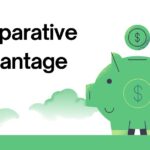Demand elasticity measures how the quantity demanded of a product responds to changes in price, income, or other factors. It plays a crucial role in pricing strategies, market analysis, and economic policies. Businesses use demand elasticity to predict how consumers will react to price changes, helping them make informed decisions on pricing and production.
Key Takeaways
- Demand elasticity determines how sensitive consumer demand is to price, income, or substitution effects.
- It is classified into price elasticity, income elasticity, and cross-price elasticity of demand.
- Example: If the price of coffee increases by 10% and demand decreases by 20%, coffee has elastic demand.
What is Demand Elasticity?
Demand elasticity refers to the degree to which the quantity demanded of a good or service changes in response to external factors like price changes, consumer income, or the price of related goods. The concept is crucial in economics because it helps businesses and policymakers understand consumer behavior and set appropriate pricing or taxation policies.
If a small price change leads to a significant shift in demand, the product is said to have elastic demand. Conversely, if demand remains relatively unchanged despite price fluctuations, the product has inelastic demand.
Types of Demand Elasticity
There are three main types of demand elasticity:
- Price Elasticity of Demand (PED): Measures how demand changes in response to a price change.
- Elastic demand: When demand significantly decreases with a small price increase (e.g., luxury goods, non-essential items).
- Inelastic demand: When demand changes very little despite price increases (e.g., gasoline, essential medicines).
- Formula: PED=% change in quantity demanded% change in pricePED = \frac{\% \text{ change in quantity demanded}}{\% \text{ change in price}}PED=% change in price% change in quantity demanded
- Example: If the price of movie tickets rises by 15% and demand drops by 30%, the demand is elastic since consumers respond significantly to the price change.
- Income Elasticity of Demand (YED): Measures how demand changes with consumer income levels.
- Normal goods: Demand increases as income rises (e.g., organic food, branded clothing).
- Inferior goods: Demand decreases as income rises (e.g., fast food, generic brands).
- Formula: YED=% change in quantity demanded% change in incomeYED = \frac{\% \text{ change in quantity demanded}}{\% \text{ change in income}}YED=% change in income% change in quantity demanded
- Example: If a consumer’s income increases by 10% and demand for luxury watches rises by 25%, the product has high-income elasticity.
- Cross-Price Elasticity of Demand (XED): Measures how demand for one good changes when the price of another related good changes.
- Substitutes: If the price of one product rises, demand for its substitute increases (e.g., tea and coffee).
- Complements: If the price of one product rises, demand for its complement decreases (e.g., cars and gasoline).
- Formula: XED=% change in quantity demanded of Good A% change in price of Good BXED = \frac{\% \text{ change in quantity demanded of Good A}}{\% \text{ change in price of Good B}}XED=% change in price of Good B% change in quantity demanded of Good A
- Example: If the price of PlayStation consoles drops, the demand for PlayStation games rises.
Factors Affecting Demand Elasticity
Several factors influence the elasticity of demand, including:
- Availability of Substitutes: If a product has many alternatives, it tends to have elastic demand (e.g., soda brands).
- Necessity vs. Luxury: Necessities have inelastic demand (e.g., electricity), while luxury goods tend to have elastic demand (e.g., designer bags).
- Proportion of Income Spent: Products that take up a larger portion of income (e.g., cars) tend to be more elastic, as consumers are more sensitive to price changes.
- Time Period: In the short term, demand is often inelastic, but over time, consumers adjust, making demand more elastic (e.g., switching to electric cars as gas prices rise).
Example of Demand Elasticity in Action
Consider the ride-sharing industry (Uber, Lyft). During peak hours, ride fares surge due to increased demand. However, if prices rise too much, many customers choose public transportation or wait for prices to drop, showing elastic demand. On the other hand, during late-night hours with limited transport options, ride-sharing demand becomes inelastic, as consumers have fewer alternatives.
Importance of Demand Elasticity in Business
- Pricing Strategies: Businesses use demand elasticity to set optimal prices. If demand is elastic, they may lower prices to increase sales.
- Revenue Optimization: Understanding elasticity helps businesses find the balance between pricing and revenue.
- Taxation Policies: Governments impose higher taxes on inelastic goods (e.g., tobacco) since demand remains stable.
- Marketing Strategies: Elasticity insights help businesses determine promotional tactics and product positioning.
Demand elasticity is a crucial concept that helps businesses and economists understand how consumer demand reacts to changes in price, income, and related goods. By analyzing elasticity, companies can optimize pricing strategies, enhance revenue, and stay competitive in changing market conditions.





